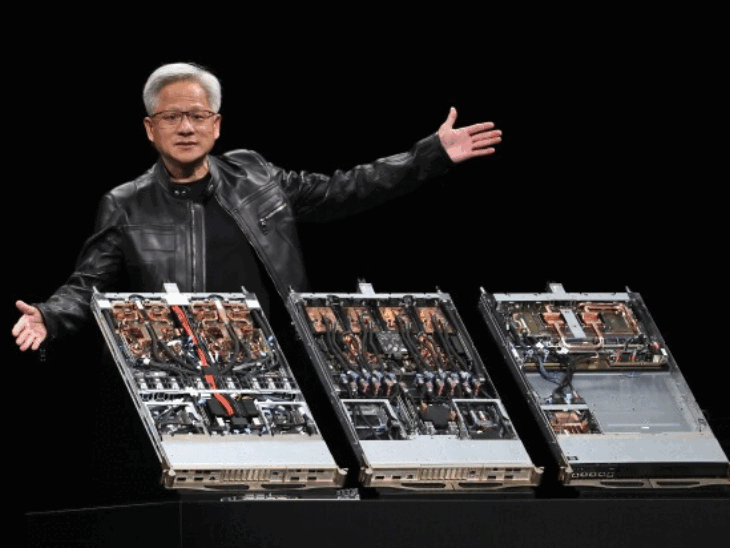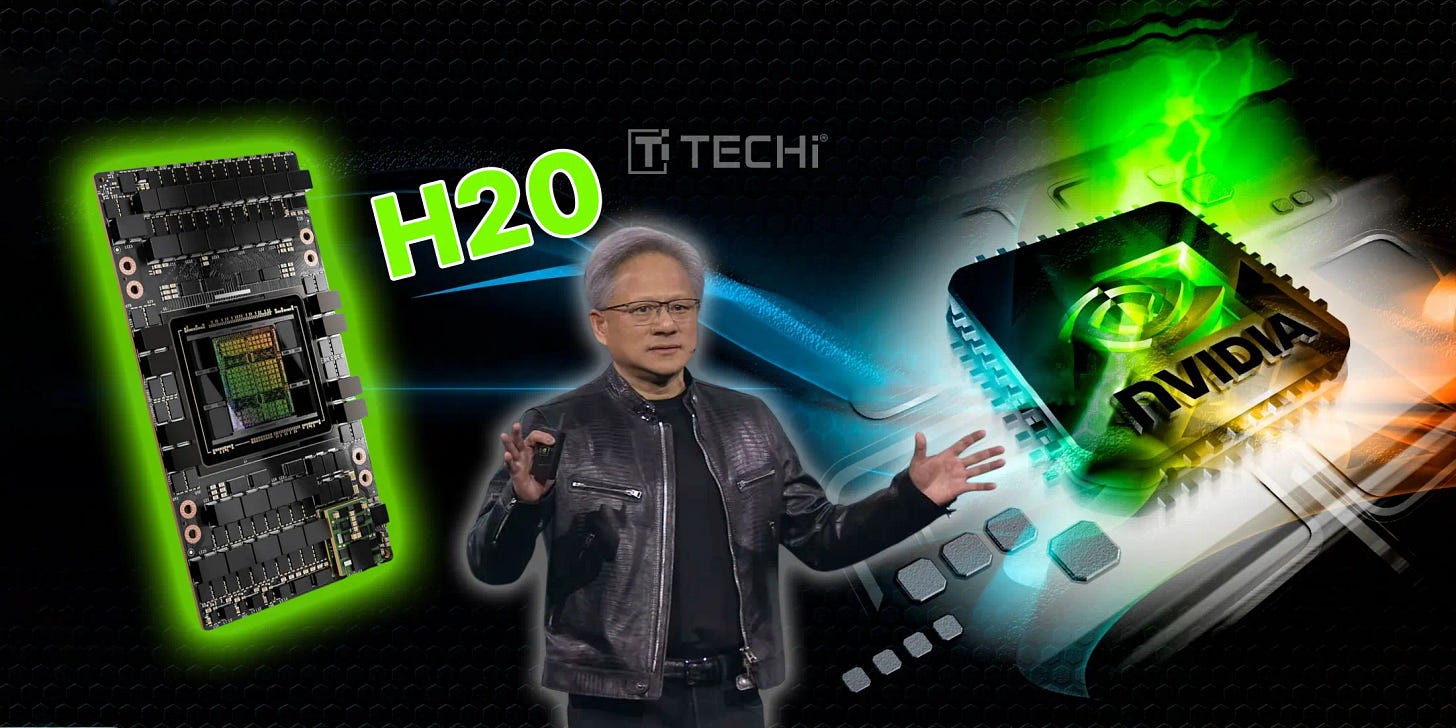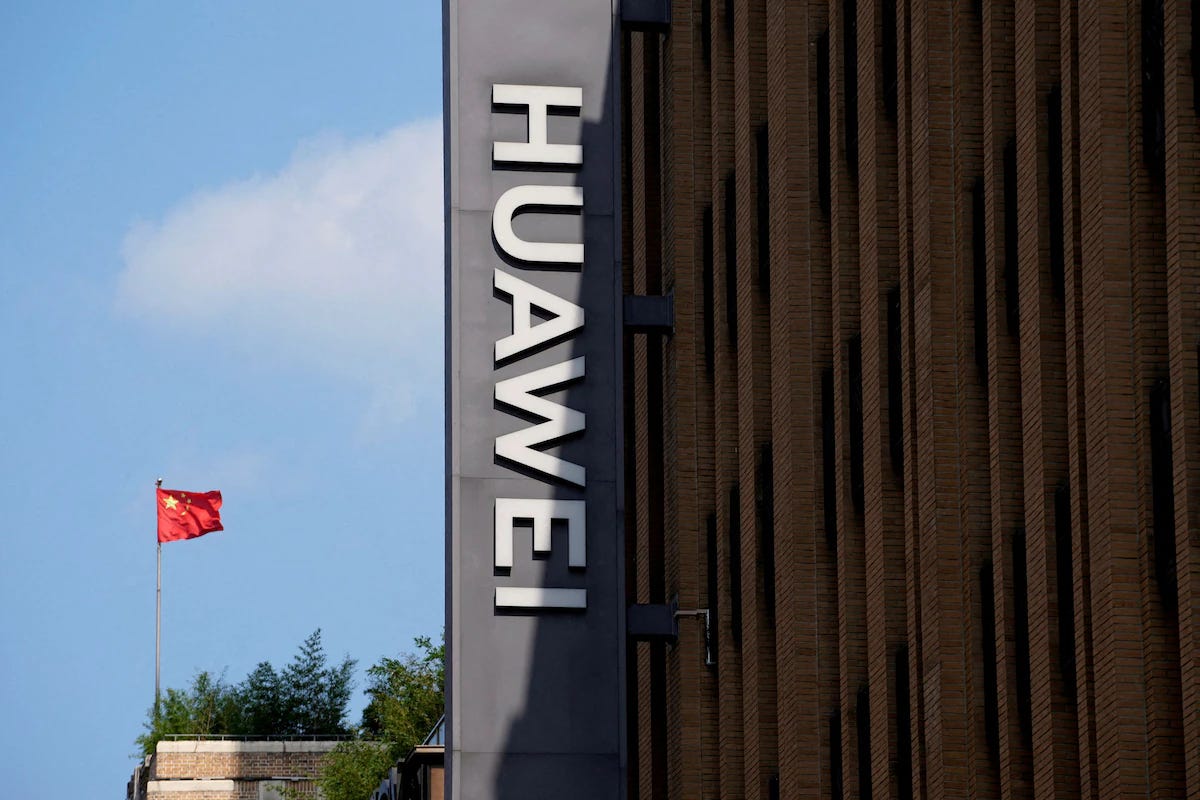
AI: Nvidia's modified Blackwell chips for China. RTZ #819
I’ve discussed extensively how Nvidia founder/CEO Jensen Huang has been laser focused on getting the US administration to continue to ‘thread the needle’ with China on AI tech and infrastructure in this AI Tech Wave. Especially important since China is half the world’s AI market, and growing rapidly with its core assets in AI Research and manufacturing ecosystem for AI hardware like cars, robots, drones and more.
This despite the bipartisan consensus in Washington that China is a geopolitical/national security/US technology leadership threat in the long-term. Almost relatively alone amongst the US big tech ‘Mag 7’ (ex-Apple), Nvidia has managed to get the US to keep the export pipeline of AI tech to China open. Even as its aperture continues to narrow.
The last example of this was of course to get the US government to allow export of Nvidia’s ‘nerfed’ H20 AI chips to be exported to China. This despite the Chinese government taking umbrage at the export curbing efforts. And the acute need by the Chinese AI industry, for these chips in the near-term, despite the herculean efforts by its companies like Huawei and others to build alternative AI hardware and software chip platforms.
Now it looks like Nvidia may manage a path to get a China modified ‘Blackwell’ chip, a core part of its current AI GPU chip roadmap.
As Reuters explains in “Nvidia working on new AI chip for China that outperforms the H20”:
“Potential new chip based on latest Blackwell architecture, sources say”
“Trump has said he may allow Nvidia to sell more advanced chips in China”
“But outlook for regulatory approval seen as highly uncertain”
“Nvidia hoping to deliver samples as early as next month, sources say”
“Nvidia is developing a new AI chip for China based on its latest Blackwell architecture that will be more powerful than the H20 model it is currently allowed to sell there, two people briefed on the matter said.”
A key development was a plot twist in Washington:
“U.S. President Donald Trump last week opened the door to the possibility of more advanced Nvidia chips being sold in China. But the sources noted U.S. regulatory approval is far from guaranteed amid deep-seated fears in Washington about giving China too much access to U.S. artificial intelligence technology.”
“The new chip, tentatively known as the B30A, will use a single-die design that is likely to deliver half the raw computing power of the more sophisticated dual-die configuration in Nvidia’s flagship B300 accelerator card, the sources said.”
“A single-die design is when all the main parts of an integrated circuit are made on one continuous piece of silicon rather than split across multiple dies.”
If designed and delivered, the new chip could have a multi-billion dollar market for Nvidia in China:
“The new chip would have high-bandwidth memory and Nvidia’s NVLink technology for fast data transmission between processors, features that are also in the H20 – a chip based on the company’s older Hopper architecture.”
As usual, Nvidia is executing on a rapid time scale, a tough thing to do with semiconductors at scale:
“The chip’s specifications are not completely finalised but Nvidia hopes to deliver samples to Chinese clients for testing as early as next month.”
Of course, this is material for Nvidia in the short and longer term:
“The extent to which China, which generated 13% of Nvidia’s revenue in the past financial year, can have access to cutting-edge AI chips is one of the biggest flashpoints in U.S.-Sino trade tensions.”
“Nvidia only received permission in July to recommence sales of the H20. It was developed specifically for China after export restrictions were put in place in 2023, but company was abruptly ordered to stop sales in April.”
“Trump said last week he might allow Nvidia to sell a scaled-down version of its next-generation chip in China after announcing an unprecedented deal that will see Nvidia and rival AMD (AMD.O), opens new tab give the U.S. government 15% of revenue from sales of some advanced chips in China.”
“A new Nvidia chip for China might have “30% to 50% off”, he suggested in an apparent reference to the chip’s computing power, adding that the H20 was “obsolete”.
The US sentiment on these curbs continues to be relatively bipartisan, despite Jensen’s balancing acts:
“U.S. legislators, both Democratic and Republican, have worried that access to even scaled-down versions of flagship AI chips will impede U.S. efforts to maintain its lead in artificial intelligence.”
“But Nvidia and others argue that it is important to retain Chinese interest in its chips – which work with Nvidia’s software tools – so that developers do not completely switch over to offerings from rivals like Huawei.”
China’s tech companies of course are not standing still:
“Huawei has made great strides in chip development, with its latest models said to be on par with Nvidia in some aspects like computing power, though analysts say it lags in key areas such as software ecosystem support and memory bandwidth capabilities.”
And China’s government of course needs to continue to play the political Kabuki theater on their side to save face politically:
“Complicating Nvidia’s efforts to retain market share in China, Chinese state media have also in recent weeks alleged that the U.S firm’s chips could pose security risks, and authorities have cautioned Chinese tech firms about purchasing the H20. Nvidia says its chips carry no backdoor risks.”
There are also possibilities of other chip variants as well:
“Nvidia is also preparing to start delivering a separate new China-specific chip based on its Blackwell architecture and designed primarily for AI inference tasks, according to two other people familiar with those plans.”
“Reuters reported in May that this chip, currently dubbed the RTX6000D, will sell for less than the H20, reflecting weaker specifications and simpler manufacturing requirements.”
“The chip is designed to fall under thresholds set by the U.S. government. It uses conventional GDDR memory and features memory bandwidth of 1,398 gigabytes per second, just below the 1.4 terabyte threshold established by restrictions introduced in April that led to the initial H20 ban.”
“Nvidia is set to deliver small batches of RTX6000D to Chinese clients in September, said one of the people.”
These efforts by Nvidia and Jensen are a good thing for long-term US tech interests globally. It keeps China’s AI industry still using core US AI hardware and software platforms And while they will continue to develop alternatives given the ongoing US posture, it potentially slows down its momentum to some degree.
At this point in this AI Tech Wave, that is a relatively attractive ‘win-win’ for all sides. Stay tuned.
(NOTE: The discussions here are for information purposes only, and not meant as investment advice at any time. Thanks for joining us here)












